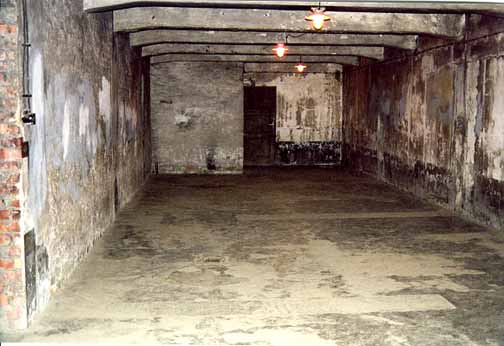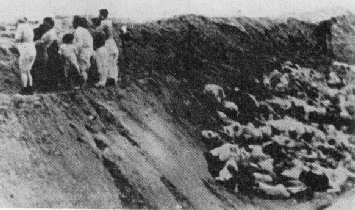

The first prisoners to be sent to Auschwitz, a group of 728 Polish political prisoners(including a hand full of Jews), arrived in Auschwitz on June 14, 1940. Within a few months of the Wannsee conference of January 1942, when the plan as to how to proceed with the murder of the Jews of Europe was presented- the "Final Solution of the Jewish Question"- Auschwitz became the main camp to which Jews were sent to be murdered. The first known transport composed entirely of Jews arrived the very next month, and such transports continued to arrive from all over occupied Europe until November 1944.


Injections

The Mass Murder of the Jews
The technique of industrialized mass murder had been planned methodically from the outset, even before the decision how to implement it had been formally adopted in January 1942. First a method had to be chosen. Shooting was ruled out because of the numbers of people and because the emotional and psychological burden it would place on the SS who had to carry it out. Gassing was thought preferable. Zyklon B gas came to be used as the instrument of murder. It could kill about 1500 people by using only 5 to 7kg of Zyklon B. Auschwitz had gas chambers of different sizes and the largest of these could kill as many as 2000 people in 10 to 20 minutes. The main victims were Jews, transported to Auschwitz to be gassed. In the summer of 1944, more than 400,000 Jews were brought from Hungary and most of them were gassed immediately on arrival.
The disposal of the bodies was a problem. Each of the four custom-built gas chambers in Auschwitz had its own crematorium, giving a capacity of reducing 4,416 bodies to ashes every 24 hours. However, 8,000 bodies could be disposed of if the incinerators were empited before the corpses were fully reduced to ashes and any remaining bones pulverized separately. But this was far fewer than the number of people that could be murdered in a day. The solution was to pile up the surplus bodies and burn them in the open air. Up to 2,000 bodies piled up, doused with methanol wastes, and set fire to: in 24 hours nothing remained but ashes, which were then scattered on fields or dumped into nearby ponds or the Sola and Vistula Rivers.

